Eye Tracking Study of Social Intensity on Social Orientation of Autistic Children
Abstract
1. Introduction
2. Materials and Methods
2.1. Participants
2.2. Design
- 2 (subject categories: ASD vs. TD) × 2 (sociality: isolated individual vs. social interaction) mixed analysis of variance (ANOVA) including fixation count and fixation duration was used to explore whether there were differences in the social attention of different participants in different scenarios.
- 2 (subject categories: ASD vs. TD) × 2 (sociality: isolated individual vs. social interaction) × 4 (area of interest: F, B, BG, and ACT) three-factor repeated metric analysis of variance was used to further explore whether there were differences in the attention areas of different participants in different social scenarios.
2.3. Stimuli
2.4. Apparatus
2.5. Procedure
- The participants sat in front of the computer with their eyes flush with the center of the screen. The distance between their eyes and the screen was about 50–70 cm. Then they were required to gaze at 7 target points on the screen in sequence (a central point, then three peripheral points, then another set of three peripheral points), staring at each point until it disappeared to complete the calibration.
- After calibration, the participants were reminded to watch the experimental materials on the screen. First, a small red “+” would appear on the black screen and hold for 500 ms to attract participants’ attention. Second, stimulus materials were introduced and played in random order, and each one would appear for 5 s. When each piece of material was switched, there would be a 500 ms black screen with a red “+” in the middle to attract participants’ attention. This operation was repeated until the end of the experiment.
- After starting the experiment, there was no instructions during the whole process, experiment adopted the free-to-view paradigm and did not require any tasks from the participants.
- The entire experiment took about 2 min.
2.6. Analysis Indicators
- Fixation count (FC): the total number of fixation points of the participant in the target area. In the Tobii Eye Tracker 5, the participant stayed in the target area for more than 100 ms as one fixation.
- Fixation duration (FD): the sum of the participant’s fixation time at all fixation points in the target area. The longer the fixation time, the higher the participant’s attention to the area, and the higher the degree of processing.
3. Results
3.1. Overall Fixation Count
3.2. Fixation Duration
3.2.1. Overall Fixation Duration
3.2.2. Fixation Duration of AOI
4. Discussion
5. Conclusions
- In the isolated individual scene, the visual processing and attention distribution of autistic children and TD children are consistent.
- In scenes with social interaction, the processing depth, attention to the scene, and social orientation ability of autistic children are different from those of TD children.
- When adding social interaction to the scene, TD children pay more attention to the faces of the characters and pay less attention to the activity area, while autistic children have no such difference.
- TD children have a smoother gaze trajectory toward the scene. Their ability to deal with social stimuli and understanding of characters’ intentions is stronger than that of autistic children.
Author Contributions
Funding
Institutional Review Board Statement
Informed Consent Statement
Data Availability Statement
Conflicts of Interest
References
- Kanner, L. Autistic disturbances of affective contact. Nervous Child 1943, 38, 217–250. [Google Scholar]
- Maenner, M.J.; Shaw, K.A.; Bakian, A.V.; Bilder, D.A.; Durkin, M.S.; Esler, A.; Furnier, S.M.; Hallas, L.; Hall-Lande, J.; Hudson, A. Prevalence and Characteristics of Autism Spectrum Disorder Among Children Aged 8 Years—Autism and Developmental Disabilities Monitoring Network, 11 Sites, United States, 2018. Morbidity and mortality weekly report. Surveill. Summ. 2021, 70, 1–16. [Google Scholar] [CrossRef] [PubMed]
- Freeth, M.; Bugembe, P. Social partner gaze direction and conversational phase; factors affecting social attention during face-to-face conversations in autistic adults? Autism 2019, 23, 503–513. [Google Scholar] [CrossRef]
- Hessels, R.; Holleman, G.; Cornelissen, T.; Hooge, I.; Kemner, C. Eye contact takes two—autistic and social anxiety traits predict gaze behavior in dyadic interaction. J. Exp. Psychopathol. 2018, 9, 062917. [Google Scholar] [CrossRef]
- Dawson, G.; Meltzoff, A.N.; Osterling, J.; Rinaldi, J.; Brown, E. Children with autism fail to orient to naturally occurring social stimuli. J. Autism Dev. Disord. 1998, 28, 479–485. [Google Scholar] [CrossRef]
- Reisinger, D.L.; Shafer, R.C.; Horn, P.S.; Hong, M.P.; Pedapati, E.V.; Dominick, K.C.; Erickson, C.A. Atypical social attention and emotional face processing in autism spectrum disorder: Insights from face scanning and pupillometry. Front. Integr. Neurosci. 2020, 13, 76. [Google Scholar] [CrossRef] [PubMed]
- Trepagnier, C.; Sebrechts, M.M.; Peterson, R. Atypical face gaze in autism. Cyber Psychol. Behav. 2002, 5, 213–217. [Google Scholar] [CrossRef] [PubMed]
- Franchini, M.; Glaser, B.; Wood, D.W.H.; Gentaz, E.; Eliez, S.; Schaer, M. Social orienting and joint attention in preschoolers with autism spectrum disorders. PLoS ONE 2017, 12, e178859. [Google Scholar] [CrossRef] [PubMed]
- Ristic, J.; Mottron, L.; Friesen, C.K.; Iarocci, G.; Burack, J.A.; Kingstone, A. Eyes are special but not for everyone: The case of autism. Cogn. Brain Res. 2005, 24, 715–718. [Google Scholar] [CrossRef]
- Pelphrey, K.A.; Morris, J.P.; Michelich, C.R.; Allison, T.; Mc Carthy, G. Functional anatomy of biological motion perception in posterior temporal cortex: An FMRI study of eye, mouth and hand movements. Cereb. Cortex 2005, 15, 1866–1876. [Google Scholar] [CrossRef] [PubMed]
- Tardif, C.; Laine, F.; Rodriguez, M.; Gepner, B. Slowing down presentation of facial movements and vocal sounds enhances facial expression recognition and induces facial–vocal imitation in children with autism. J. Autism Dev. Disord. 2007, 37, 1469–1484. [Google Scholar] [CrossRef] [PubMed]
- Saitovitch, A.; Bargiacchi, A.; Chabane, N. Studying gaze abnormalities in autism: Which type of stimulus to use? Open J. Psychiatry 2013, 3, 32–38. [Google Scholar] [CrossRef]
- Yarbus, A.L. Eye Movements and Vision (B. Haigh, Trans.); Plenum Press: New York, NY, USA, 1965. [Google Scholar]
- Jan, T.; Stefan, V.S. Faces capture attention: Evidence from inhibition of return. Vis. Cogn. 2006, 13, 657–665. [Google Scholar]
- Chita-Tegmark, M. Social attention in ASD: A review and meta-analysis of eye-tracking studies. Res. Dev. Disabil. 2016, 48, 79–93. [Google Scholar] [CrossRef] [PubMed]
- Chita-Tegmark, M. Attention allocation in ASD: A review and meta-analysis of eye-tracking studies. Rev. J. Autism Dev. Disord. 2016, 3, 209–223. [Google Scholar] [CrossRef]
- Hall, G.B.C.; Szechtman, H.; Nahmlas, C. Enhanced salience and emotion recognition in autism: A pet study. Am. J. Psychiatry 2003, 160, 1439–1441. [Google Scholar] [CrossRef] [PubMed]
- Guillon, Q.; Hadjikhani, N.; Baduel, S.; Roge, B. Visual social attention in autism spectrum disorder: Insights from eye tracking studies. Neurosci. Biobehav. Rev. 2014, 42, 279–297. [Google Scholar] [CrossRef]
- Papagiannopoulou, E.A.; Chitty, K.M.; Hermens, D.F.; Hickie, I.B.; Lagopoulos, J. A systematic review and meta-analysis of eye-tracking studies in children with autism spectrum disorders. Soc. Neurosci. 2014, 9, 610–632. [Google Scholar] [CrossRef] [PubMed]
- Falckytter, T.; Hofsten, C.V. How special is social looking in ASD: A review. Prog. Brain Res. 2011, 18, 209–222. [Google Scholar]
- Aldaqre, I.; Paulus, M.; Sodian, B. Referential gaze and word learning in adults with autism. Autism 2014, 19, 944–955. [Google Scholar] [CrossRef] [PubMed]
- Parish-Morris, J.; Pallathra, A.A.; Ferguson, E.; Maddox, B.B.; Pomykacz, A.; Perez, L.S.; Bateman, L.; Pandey, J.; Schultz, R.T.; Brodkin, E.S. Adaptation to different communicative contexts: An eye tracking study of autistic adults. J. Neurodev. Disord. 2019, 11, 5. [Google Scholar] [CrossRef] [PubMed]
- Del Bianco, T.; Mazzoni, N.; Bentenuto, A.; Venuti, P. An investigation of attention to faces and eyes: Looking time is task-dependent in autism spectrum disorder. Front. Psychol. 2018, 9, 2629. [Google Scholar] [CrossRef] [PubMed]
- Pelphrey, K.A.; Sasson, N.J.; Reznick, J.S.; Paul, G.; Goldman, B.D.; Piven, J. Visual scanning of faces in autism. J. Autism Dev. Disord. 2002, 32, 249–261. [Google Scholar] [CrossRef] [PubMed]
- Birmingham, E.; Bischof, W.F.; Kingstone, A. Social attention and real—world scenes: The roles of action, competition and social content. Q. J. Exp. Psychol. 2008, 61, 986–998. [Google Scholar] [CrossRef] [PubMed]
- Bayliss, A.P.; Tipper, S.P. Predictive gaze cues and personality judgments: Should eye trust you? Psychol. Sci. 2006, 17, 514–520. [Google Scholar] [CrossRef] [PubMed]
- Mundy, P.; Neal, A.R. Neural plasticity, joint attention, and a transactional social—orienting model of autism. Int. Rev. Res. Ment. Retard. 2000, 23, 139–168. [Google Scholar]
- Nuske, H.J.; Vivanti, G.; Dissanayake, C. Reactivity to fearful expressions of familiar and unfamiliar people in children with autism: An eye-tracking pupillometry study. J. Neurodev. Disord. 2014, 6, 14. [Google Scholar] [CrossRef] [PubMed]
- Sterling, L.; Dawson, G.; Webb, S.; Murias, M.; Munson, J.; Panagiotides, H.; Aylward, E. The role of face familiarity in eye tracking of faces by individuals with autism spectrum disorders. J. Autism Dev. Disord. 2008, 38, 1666–1675. [Google Scholar] [CrossRef]
- Wei, L.; Yu, Y.; Liu, R.; Cheng, Y. Age characteristics of scenes affect gaze patterns in children with autism spectrum disorder. Stud. Psychol. Behav. 2020, 18, 679–685. (in Chinese). [Google Scholar]
- Frazier, T.W.; Strauss, M.; Klingemier, E.W.; Zetzer, E.E.; Hardan, A.Y.; Eng, C.; Youngstrom, E.A. A meta-analysis of gaze differences to social and nonsocial information between individuals with and without autism. J. Am. Acad. Child Adolesc. Psychiatry 2017, 56, 546–555. [Google Scholar] [CrossRef] [PubMed]
- Elsabbagh, M.; Bedford, R.; Senju, A.; Charman, T.; Pickles, A.; Johnson, M.H. What you see is what you get: Contextual modulation of face scanning in typical and atypical development. Soc. Cogn. Affect. Neurosci. 2014, 9, 538–543. [Google Scholar] [CrossRef] [PubMed]
- Freeth, M.; Chapman, P.; Ropar, D.; Mitchell, P. Do gaze cues in complex scenes capture and direct the attention of high functioning adolescents with ASD? Evidence from eye tracking. J. Autism Dev. Disord. 2010, 40, 534–547. [Google Scholar] [CrossRef] [PubMed]
- Rigby, S.N.; Stoesz, B.M.; Jakobsoa, L.S. Gaze patterns during scene processing in typical adults and adults with autism spectrum disorders. Res. Autism Spectr. Disord. 2016, 25, 24–36. [Google Scholar] [CrossRef]
- Smilek, D.; Birmingham, E.; Cameron, D.; Bischof, W.; Kingstone, A. Cognitive ethology and exploring attention in real—world scenes. Brain Res. 2006, 10, 101–119. [Google Scholar] [CrossRef]
- Hill, J.L.; Patel, S.; Xue, G.; Seyedali, N.S.; Bachevalier, J.; Sereno, A.B. Social orienting: Reflexive versus voluntary control. Vis. Res. 2010, 50, 2080–2092. [Google Scholar] [CrossRef]
- Speer, L.L.; Cook, A.E.; Mc Mahon, W.M.; Clark, E. Face processing in children with autism: Effects of stimulus contents and type. Autism 2007, 11, 265–277. [Google Scholar] [CrossRef]
- Hanley, M.; Mc Phillips, M.; Mulhern, G.; Riby, D.M. Spontaneous attention to faces in Asperger syndrome using ecologically valid static stimuli. Autism 2013, 17, 754–761. [Google Scholar] [CrossRef]
- van der Geest, J.N.; Kemner, C.; Verbaten, M.N.; van Engeland, H. Gaze behavior of children with pervasive developmental disorder toward human faces: A fixation time study. J. Child Psychol. Psychiatry 2002, 43, 669–678. [Google Scholar] [CrossRef]
- Delphine, B.R.; Ce’cilie, R.; David, D.F.; Andreia, S.; Brigitte, A.; Christine, D. Typical emotion processing for cartoon but not for real faces in children with autistic spectrum disorders. J. Autism Dev. Disord. 2008, 38, 919–925. [Google Scholar]
- National Health Commission of the People’s Republic of China. Developmental Scale for Children Aged 0–6 Years. WS/T 580-2017. Available online: http://www.nhc.gov.cn/wjw/pqt/201710/8e070f8482144cae97088668f0dfe25a.shtml (accessed on 26 October 2017). (In Chinese)
- Schultz, R.T.; Gsuthier, I.; Klin, A.; Fullbright, R.K.; Anderson, A.W.; Volkmar, F.; Skudlarski, P.; Lacadie, C.; Cohen, D.J.; Gore, J.C. Abnormal ventral temporal cortical activity during face discrimination among individuals with autism and asperger ayndrome. Arch. Gen. Psychiatry 2000, 57, 331–340. [Google Scholar] [CrossRef]
- Dapretto, M.; Davies, M.S.; Pfeifer, J.H.; Scott, A.A.; Sigman, M.; Bookheimer, S.Y.; Iacoboni, M. Understanding emotions in others: Mirror neuron dysfunction in children with autism spectrum disorders. Nat. Neurosci. 2005, 9, 28–30. [Google Scholar] [CrossRef] [PubMed]
- Riby, D.; Hancock, P. Viewing it differently: Social scene perception in willimis syndrome and autism. Neuropsychologia 2008, 46, 2855–2860. [Google Scholar] [CrossRef] [PubMed]
- Freeth, M.; Ropar, D.; Chapman, P.; Mitchell, P. The eye gaze direction of an observed person can bias perception, memory, and attention in adolescents with and without autism spectrum disorder. J. Exp. Child Psychol. 2010, 15, 20–37. [Google Scholar] [CrossRef] [PubMed][Green Version]
- Robain, F.; Kojovic, N.; Solazzo, S.; Glaser, B.; Franchini, M.; Schaer, M. The impact of social complexity on the visual exploration of others’ actions in preschoolers with autism spectrum disorder. BMC Psychol. 2021, 9, 50. [Google Scholar] [CrossRef] [PubMed]
- Rice, K.; Moriuchi, J.M.; Jones, W.; Klin, A. Parsing heterogeneity in autism spectrum disorders: Visual scanning of dynamic social scenes in school-aged children. J. Am. Acad. Child Adolesc. Psychiatry 2012, 51, 238–248. [Google Scholar] [CrossRef]
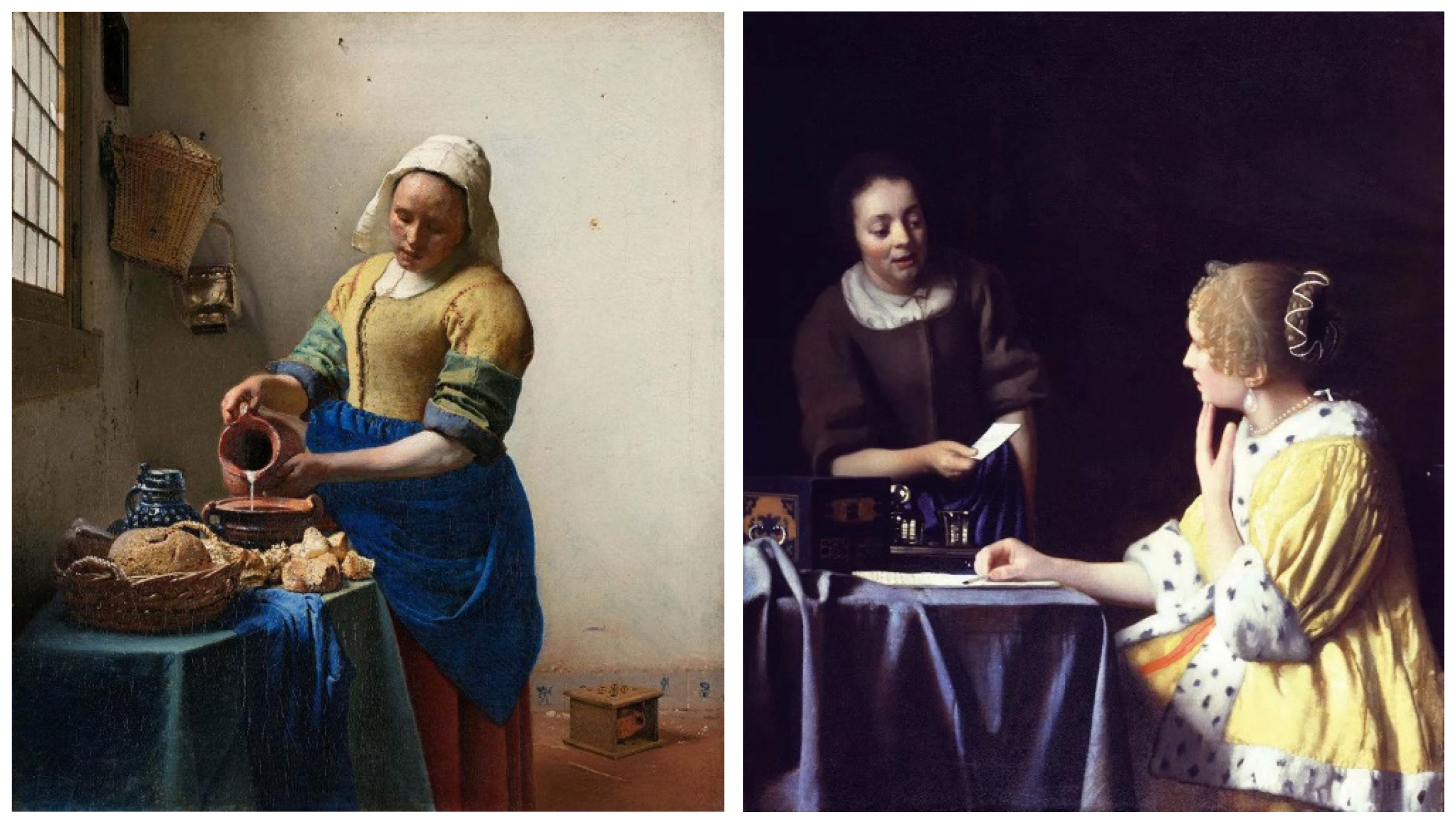


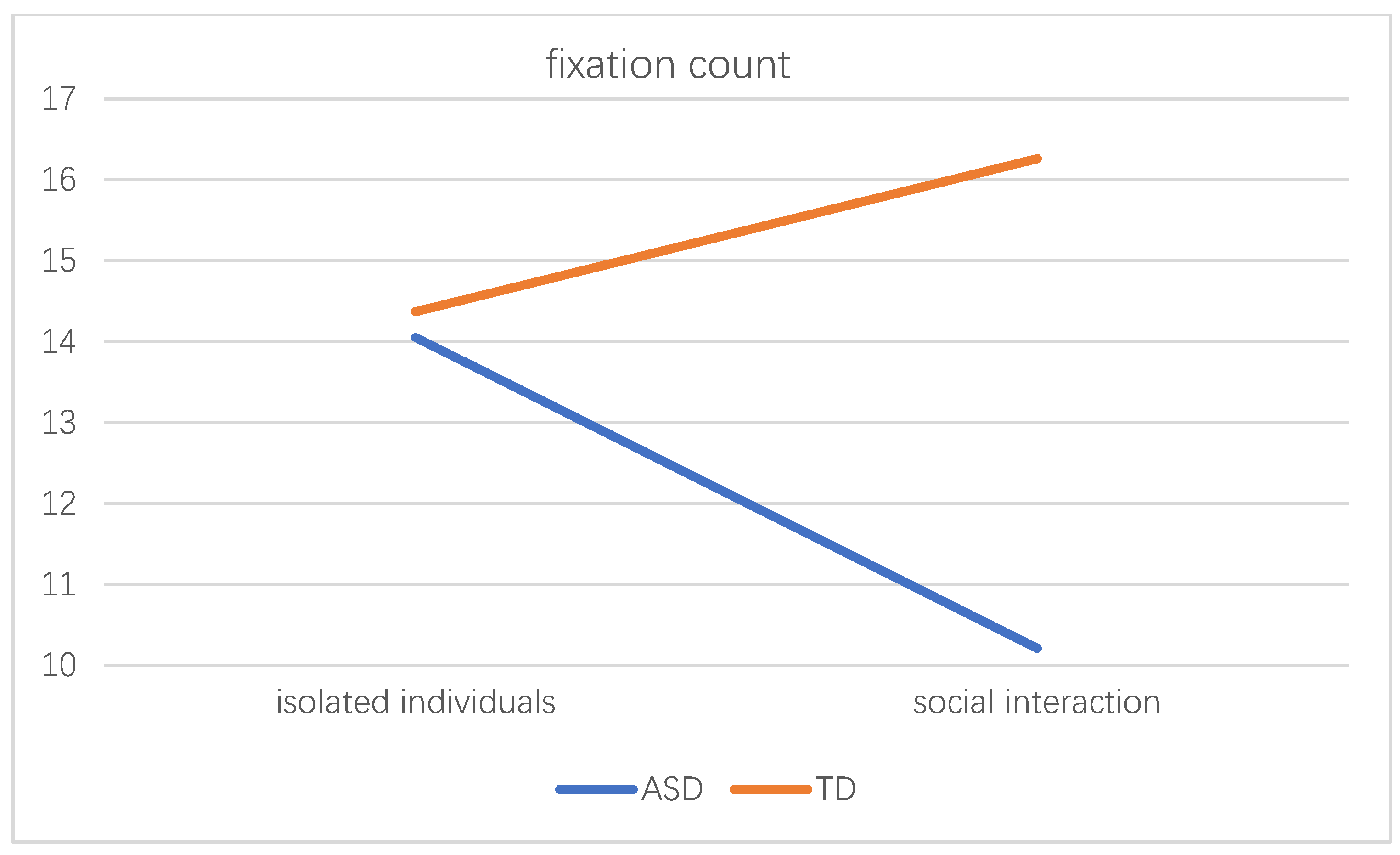


| Experimental Group | Control Group | |||
|---|---|---|---|---|
| M | SD | M | SD | |
| Isolated individual scene | 14.05 | 5.59 | 14.37 | 3.17 |
| Social interaction scene | 10.21 | 6.35 | 16.26 | 3.60 |
| Experimental Group | Control Group | |||
|---|---|---|---|---|
| M | SD | M | SD | |
| isolated individual scene | 4039.47 | 1139.78 | 4651.47 | 654.01 |
| social interaction scene | 3136.37 | 1600.97 | 4255.42 | 1195.23 |
| Experimental Group | Control Group | ||||
|---|---|---|---|---|---|
| M | SD | M | SD | ||
| F Face AOI | isolated | 450.00 | 568.16 | 674.16 | 491.33 |
| social | 709.11 | 988.55 | 1810.37 | 920.29 | |
| B Body AOI | isolated | 848.26 | 910.49 | 875.63 | 718.94 |
| social | 1002.89 | 1062.86 | 722.68 | 516.91 | |
| ACT Activity AOI | isolated | 1443.74 | 1318.04 | 1903.11 | 988.28 |
| social | 1282.63 | 1644.62 | 877.53 | 648.31 | |
| BG Background AOI | isolated | 1297.47 | 1479.42 | 1198.58 | 1067.85 |
| social | 1206.16 | 921.86 | 1554.53 | 878.65 | |
| Experimental Group | Control Group | |
|---|---|---|
| isolated individual scene |  | 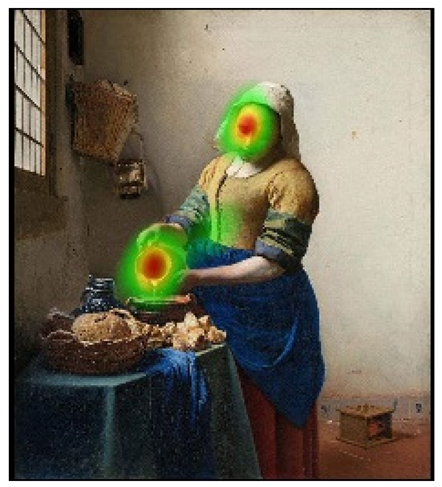 |
| social interaction scene | 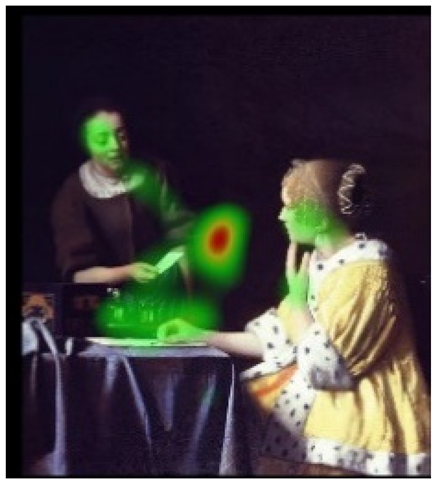 | 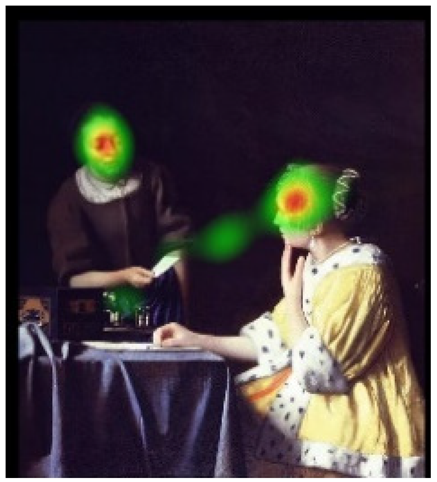 |
| Experimental Group | Control Group | |
|---|---|---|
| isolated individual scene |  | 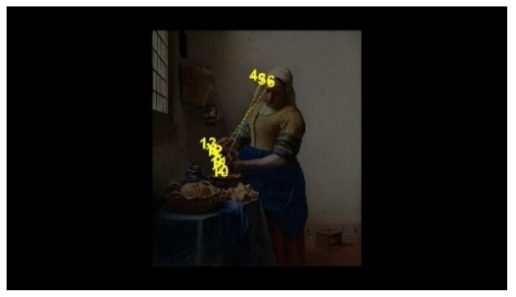 |
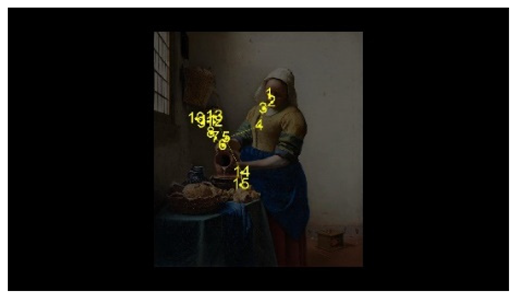 |  | |
| isolated individual scene | 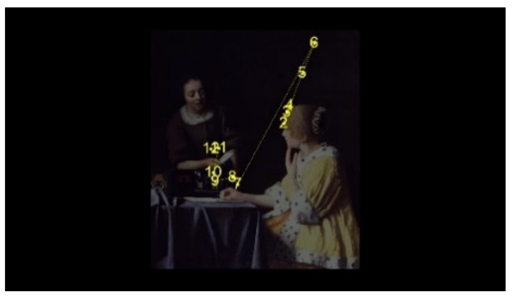 |  |
 |  |
Publisher’s Note: MDPI stays neutral with regard to jurisdictional claims in published maps and institutional affiliations. |
© 2022 by the authors. Licensee MDPI, Basel, Switzerland. This article is an open access article distributed under the terms and conditions of the Creative Commons Attribution (CC BY) license (https://creativecommons.org/licenses/by/4.0/).
Share and Cite
Zhang, Y.; Zhang, K.; Chen, J.; Liu, L.; Luo, M.; Chen, Q.; Zeng, X.; Wang, G. Eye Tracking Study of Social Intensity on Social Orientation of Autistic Children. Behav. Sci. 2022, 12, 322. https://doi.org/10.3390/bs12090322
Zhang Y, Zhang K, Chen J, Liu L, Luo M, Chen Q, Zeng X, Wang G. Eye Tracking Study of Social Intensity on Social Orientation of Autistic Children. Behavioral Sciences. 2022; 12(9):322. https://doi.org/10.3390/bs12090322
Chicago/Turabian StyleZhang, Yajing, Kun Zhang, Jingying Chen, Lili Liu, Meijuan Luo, Qian Chen, Xiao Zeng, and Guangshuai Wang. 2022. "Eye Tracking Study of Social Intensity on Social Orientation of Autistic Children" Behavioral Sciences 12, no. 9: 322. https://doi.org/10.3390/bs12090322
APA StyleZhang, Y., Zhang, K., Chen, J., Liu, L., Luo, M., Chen, Q., Zeng, X., & Wang, G. (2022). Eye Tracking Study of Social Intensity on Social Orientation of Autistic Children. Behavioral Sciences, 12(9), 322. https://doi.org/10.3390/bs12090322







